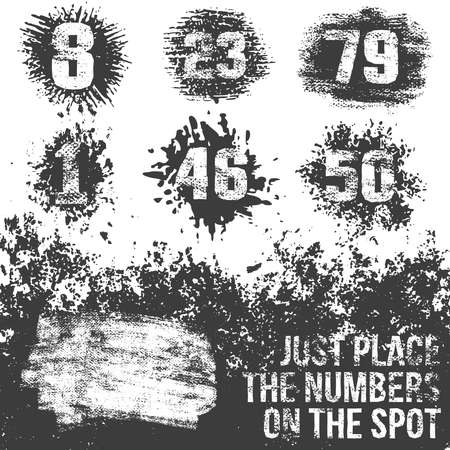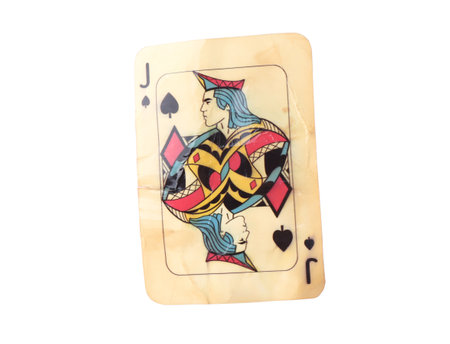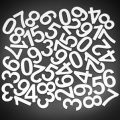1. Introduction to Tarot Decks
If you’ve ever seen those mysterious cards in movies, TV shows, or even at a friend’s house party, you might have wondered: What exactly are tarot cards? Tarot decks have a fascinating history that stretches back centuries and have become a significant part of Western pop culture and spirituality, especially in the United States.
The Origins of Tarot Cards
Tarot cards first appeared in Europe during the 15th century. Originally, they were used for playing games—think of them as an old-school card game before they became tools for divination. Over time, people began using tarot cards to explore life’s mysteries, seek personal insight, and even predict the future.
Tarot’s Journey to America
Tarot cards made their way to America in the late 19th and early 20th centuries, coinciding with a surge of interest in mysticism and the occult. In the U.S., tarot quickly became more than just fortune-telling—it evolved into a tool for self-reflection and spiritual growth.
Key Milestones in Tarot History
| Year/Period | Event |
|---|---|
| 15th Century | Tarot cards originated in Europe as playing cards |
| 18th Century | Became associated with divination and mysticism |
| Early 1900s | Spread to the United States; rise of spiritualism |
| 1960s-70s | Boom in popularity during the New Age movement |
| Present Day | Mainstream tool for self-help, meditation, and pop culture references |
Tarot in American Pop Culture & Spirituality
Today, you’ll find tarot referenced everywhere—from Hollywood films to best-selling books, podcasts, and social media trends. People across the U.S. use tarot not just for predicting the future but for guidance, creativity, and personal reflection. For many Americans, pulling a daily tarot card is like checking their horoscope or setting intentions for the day.
How Americans Use Tarot Today:
- Personal growth and mindfulness practices
- Storytelling and creative brainstorming
- Sparking conversations at gatherings or parties
- Meditation and spiritual exploration
This unique blend of history, symbolism, and modern relevance makes tarot a vibrant part of American culture today.
2. The Structure of a Tarot Deck
If you’re just getting started with tarot cards, understanding how a deck is built can make learning a lot easier. Every standard tarot deck has 78 cards in total, and these are split into two main groups: the Major Arcana and the Minor Arcana. Each group has its own style, purpose, and symbolism, so let’s break it down.
Major Arcana vs. Minor Arcana
| Category | Number of Cards | Main Focus | Examples |
|---|---|---|---|
| Major Arcana | 22 | Big life themes, spiritual lessons, personal growth | The Fool, The Lovers, The World |
| Minor Arcana | 56 | Everyday events, daily situations, practical matters | Ace of Cups, Ten of Swords, King of Wands |
Major Arcana: The Big Picture Cards
The Major Arcana cards are sometimes called “trump cards.” These 22 cards represent key moments or turning points in your journey—think of them as major plot twists in your personal story. Each card has its own name and number, starting with The Fool (0) and ending with The World (21). When you see Major Arcana cards in a reading, they usually point to important life changes or spiritual insights.
Minor Arcana: Day-to-Day Life Cards
The Minor Arcana makes up the remaining 56 cards and deals more with what happens in everyday life. This part of the deck is split into four suits: Cups, Pentacles (sometimes called Coins), Swords, and Wands. Each suit has 14 cards: Ace through 10, plus four “court cards” (Page, Knight, Queen, King).
Breakdown of the Minor Arcana Suits
| Suit | Main Theme | Associated Element | American Culture Example |
|---|---|---|---|
| Cups | Emotions & Relationships | Water | Family bonds, friendships, love stories like those in classic movies or TV shows (think “Friends” or “This Is Us”) |
| Pentacles/Coins | Money & Career | Earth | The pursuit of the American Dream—careers, finances, home ownership (“The Pursuit of Happyness,” “Shark Tank”) |
| Swords | Thoughts & Communication | Air | Tough decisions or debates—like courtroom dramas (“Law & Order,” high school debate teams) |
| Wands | Passion & Creativity | Fire | Pursuing dreams or creative projects—startup culture, artistic expression (“Project Runway,” Silicon Valley startups) |
Court Cards Explained:
The court cards (Page, Knight, Queen, King) often represent people or personalities in a situation. For example: A Page could symbolize a beginner or young person; a Queen might stand for someone nurturing; a King could be an authority figure; and a Knight can mean action or movement.
This basic structure forms the foundation for all tarot readings—and knowing which type of card you’re looking at helps you understand whether the message is about big life themes or day-to-day happenings.

3. Major Arcana: The Journey of Self-Discovery
The Major Arcana cards are often seen as the heart of any tarot deck. There are 22 cards in the Major Arcana, each representing a significant moment, lesson, or theme in our lives. These cards tell a story—often called “The Fool’s Journey”—that mirrors our own personal growth and transformation.
The Symbolism and Meaning of Major Arcana Cards
Every Major Arcana card is packed with symbols that carry deep meaning. These cards don’t just predict events; they highlight key turning points, big decisions, and personal breakthroughs. Let’s break down what these 22 cards stand for in the context of self-discovery:
| Card Number & Name | Key Symbolism | Theme for Personal Growth |
|---|---|---|
| 0 – The Fool | New beginnings, innocence, adventure | Taking leaps of faith, embracing possibilities |
| I – The Magician | Manifestation, power, resourcefulness | Using your skills to create change |
| II – The High Priestess | Intuition, mystery, inner wisdom | Listening to your gut feelings and dreams |
| III – The Empress | Nurturing, abundance, creativity | Caring for yourself and others, growth |
| IV – The Emperor | Structure, stability, authority | Building foundations and setting boundaries |
| V – The Hierophant | Tradition, learning, beliefs | Seeking guidance or exploring your values |
| VI – The Lovers | Choices, relationships, harmony | Making important decisions about love or values |
| VII – The Chariot | Determination, willpower, victory | Pushing forward and overcoming challenges |
| VIII – Strength | Courage, patience, compassion | Taming your fears and acting with kindness |
| IX – The Hermit | Soul-searching, solitude, reflection | Taking time out for inner guidance and wisdom |
| X – Wheel of Fortune | Karma, cycles, fate | Accepting changes and going with the flow of life |
| XI – Justice | Truth, fairness, balance | Moral decisions and accepting responsibility |
| XII – The Hanged Man | Sacrifice, letting go, new perspectives | Seeing things from another angle; surrendering control |
| XIII – Death | Transformation, endings, rebirth | Losing old habits to make space for growth |
| XIV – Temperance | Balance, moderation, healing | Pacing yourself and finding harmony |
| XV – The Devil | Addiction, materialism, shadow self | Acknowledging unhealthy patterns and breaking free |
| XVI – The Tower | Sudden change, upheaval, revelation | Coping with shocks and rebuilding stronger foundations |
| XVII – The Star | Hope, inspiration, renewal | Bouncing back from hard times; trusting in the future |
| XVIII – The Moon | Anxiety, illusion, subconscious mind | Navigating uncertainty and listening to intuition |
| XIX – The Sun | Joy, success, vitality | Cherishing happiness and celebrating achievements |
| XX – Judgment | Atonement, reflection, awakening | Taking stock of your life and making big choices |
| XXI – The World | Completion , fulfillment , wholeness | Celebrating accomplishments ; embracing your journey |
The Role of Major Arcana in Everyday Life Events
Major Arcana cards tend to pop up during big life moments—think starting a new job (The Fool), facing tough decisions (Justice), or experiencing sudden changes (The Tower). When these cards show up in a reading , theyre like signposts that encourage you to reflect on where you are , what youve learned , and where you want to go next . In short , they help you see lifes twists and turns as part of your own unique journey .
4. Minor Arcana: Everyday Life and Challenges
The Four Suits of the Minor Arcana
The Minor Arcana is made up of four suits, each with its own unique symbolism and meaning. These suits represent different aspects of daily life, personal experiences, and challenges that most Americans can relate to. Let’s take a closer look at each suit:
| Suit | Element | Modern Associations | Key Themes |
|---|---|---|---|
| Cups | Water | Emotions, Relationships | Love, family, friendships, feelings |
| Pentacles (Coins) | Earth | Money, Career, Home | Work, finances, material stability, home life |
| Swords | Air | Thoughts, Communication | Conflict, decisions, mental challenges, truth |
| Wands | Fire | Passion, Ambition, Creativity | Inspiration, projects, motivation, growth |
Cups: Matters of the Heart and Connection
Cups are all about emotions and relationships. If you’re dealing with love dilemmas, family drama during the holidays, or friendship ups and downs—Cups cards will likely pop up in your reading. In American culture, where social connections and emotional well-being are valued, these cards often mirror everyday interactions and feelings.
Pentacles: Work, Money, and Security
Pentacles focus on practical matters like job stability, home ownership dreams (think the classic “American Dream”), student loans, or financial planning. They reflect how we manage resources and pursue security—a big part of life for many Americans juggling careers and bills.
Swords: Communication and Tough Choices
Swords highlight times when you face tough conversations at work or with family, need to make a decision about college or moving states for a new opportunity, or deal with mental health struggles. Swords remind us that clarity and honesty—values held high in American workplaces and relationships—are essential for overcoming life’s conflicts.
Wands: Ambitions and New Beginnings
If you’ve ever started a new business venture or chased a passion project after seeing someone succeed on social media—Wands energy is at play. These cards inspire action and creativity. For Americans who value innovation and self-expression, Wands represent taking initiative and embracing change.
How Minor Arcana Reflects Real-Life Situations in America
The Minor Arcana helps put tarot into context for modern American life. Whether it’s balancing work and family (Pentacles), navigating complicated friendships (Cups), speaking up for what you believe in (Swords), or daring to launch something new (Wands), these cards capture the ups and downs everyone faces. The Minor Arcana turns tarot into a tool that feels accessible—helping you find meaning in ordinary moments as well as bigger challenges.
5. Decoding Tarot Symbolism
Tarot cards are rich with symbols, colors, and imagery, each carefully designed to spark intuition and deepen your understanding during a reading. For many in the United States, tarot has become a tool not just for divination but also for self-reflection and personal growth. Let’s break down the most common elements you’ll see on tarot cards and how they can guide interpretations in a modern American context.
Common Symbols in Tarot Cards
| Symbol | Meaning | Modern Context Example |
|---|---|---|
| The Sun | Clarity, success, happiness | Feeling optimistic about a new job or relationship |
| The Moon | Intuition, dreams, uncertainty | Navigating unclear situations at work or school |
| The Tower | Sudden change, upheaval, revelation | Unexpected life events like moving or career shifts |
| The Lovers | Choices, relationships, harmony | Making big decisions about love or partnerships |
| Swords (Suit) | Thoughts, communication, conflict | Working through disagreements with friends or coworkers |
| Cups (Suit) | Emotions, relationships, intuition | Understanding feelings in close friendships or family matters |
| Pentacles (Suit) | Material concerns, career, finances | Planning budgets or considering job opportunities |
| Wands (Suit) | Inspiration, action, creativity | Pursuing creative projects or setting new goals |
The Role of Color in Tarot Readings
Colors on tarot cards aren’t just for looks—they set the mood and add layers to card meanings. Here’s how some common colors are interpreted:
| Color | Symbolism in Tarot | American Cultural Connection |
|---|---|---|
| Red | Passion, energy, action | Taking bold steps—like starting a business or advocating for a cause |
| Blue | Calmness, truth, communication | Open conversations and seeking peace in relationships |
| Yellow/Gold | Happiness, clarity, optimism | Pursuing joy and self-improvement projects |
| Black | Mystery, endings, protection | Tapping into the unknown; exploring spirituality |
Imagery and Modern Interpretation Tips
- Nature scenes: Cards featuring mountains often represent challenges; water can symbolize emotions. In American readings, these images might remind someone of their own journeys—whether hiking literal trails or navigating emotional ups and downs.
- Animals: Animals on cards—like lions for courage or dogs for loyalty—help connect the reading to everyday life values and experiences.
- Cultural references: While traditional decks use European symbolism, many contemporary American decks include diverse imagery to reflect local experiences and identities.
A Simple Way to Use Symbolism in Your Readings
If you’re reading tarot for yourself or friends in the U.S., try this: notice which symbols stand out to you first. Ask what they mean to you personally—sometimes your interpretation will be shaped by your culture or recent experiences. For example, seeing an eagle might resonate differently for Americans because of its national symbolism.
The more familiar you get with these visual cues—whether it’s color choices or symbolic animals—the more confident you’ll feel interpreting tarot in ways that truly speak to your life and your community.


